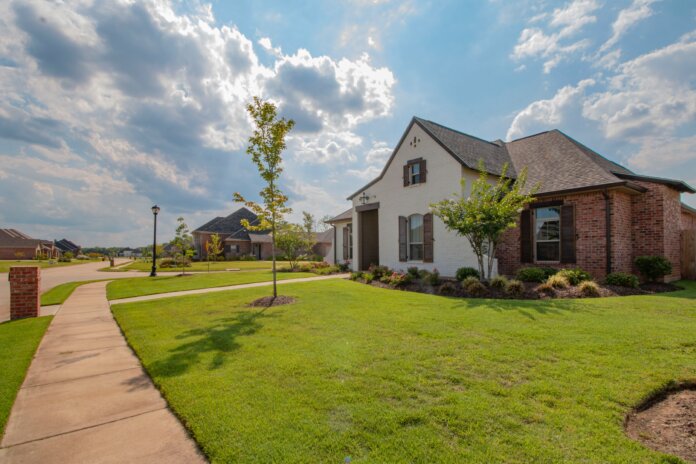
Existing-home sales declined for the tenth month in a row in November, according to the National Association of Realtors (NAR). All four major U.S. regions recorded month-over-month and year-over-year declines.
Total existing-home sales – completed transactions that include single-family homes, townhomes, condominiums and co-ops – waned 7.7% from October to a seasonally adjusted annual rate of 4.09 million in November. Year-over-year, sales dwindled by 35.4% (down from 6.33 million in November 2021).
“In essence, the residential real estate market was frozen in November, resembling the sales activity seen during the COVID-19 economic lockdowns in 2020,” states Lawrence Yun, NAR’s chief economist. “The principal factor was the rapid increase in mortgage rates, which hurt housing affordability and reduced incentives for homeowners to list their homes. Plus, available housing inventory remains near historic lows.”
Total housing inventory registered at the end of November was 1.14 million units, which was down 6.6% from October, but up 2.7% from one year ago (1.11 million). Unsold inventory sits at a 3.3-month supply at the current sales pace, which was identical to October, but up from 2.1 months in November 2021.
The median existing-home price for all housing types in November was $370,700, an increase of 3.5% from November 2021 ($358,200), as prices rose in all regions. This marks 129 consecutive months of year-over-year increases, the longest-running streak on record.
Properties typically remained on the market for 24 days in November, up from 21 days in October and 18 days in November 2021. Sixty-one percent of homes sold in November 2022 were on the market for less than a month.
First-time buyers were responsible for 28% of sales in November, which was unchanged from October, but up from 26% in November 2021. NAR’s 2022 Profile of Home Buyers and Sellers – released last month – found that the annual share of first-time buyers was 26%, the lowest since NAR began tracking the data.
All-cash sales accounted for 26% of transactions in November – identical to October and up from 24% in November 2021.
Individual investors or second-home buyers, who make up many cash sales, purchased 14% of homes in November, down from 16% in October and 15% in November 2021.
Distressed sales – foreclosures and short sales – represented 2% of sales in November, virtually unchanged from last month and one year ago.
According to Freddie Mac, the 30-year fixed-rate mortgage averaged 6.31% as of December 15. That’s down from 6.33% last week, but up from 3.12% one year ago.
“The market may be thawing since mortgage rates have fallen for five straight weeks,” Yun adds. “The average monthly mortgage payment is now almost $200 less than it was several weeks ago when interest rates reached their peak for this year.”
Realtor.com’s Market Trends Report in November shows that the largest year-over-year median list price growth occurred in Milwaukee (+38.1%), Memphis (+26.9%) and Miami (+24.8%). Phoenix reported the highest increase in the share of homes that had prices reduced compared to last year (+28.4 percentage points), followed by Austin (+23.8 percentage points) and Denver (+21.0 percentage points).
Single-family home sales declined to a seasonally adjusted annual rate of 3.65 million in November, down 7.6% from 3.95 million in October and 35.2% from one year ago. The median existing single-family home price was $376,700 in November, up 3.2% from November 2021.
Existing condominium and co-op sales were recorded at a seasonally adjusted annual rate of 440,000 units in November, down 8.3% from October and 37.1% from the previous year. The median existing condo price was $321,600 in November, an annual increase of 5.8%.
“For most of this year, prospective home buyers have faced the dual challenges of elevated mortgage rates and limited housing inventory,” comments Kenny Parcell, NAR’s president, a Realtor from Spanish Fork, Utah, and broker-owner of Equity Real Estate Utah. “Consumers can rely on Realtors to provide informed guidance on changing market conditions and trusted expertise throughout all steps of the home buying process.”
Existing-home sales in the Northeast decreased 7.0% from October to an annual rate of 530,000 in November, down 28.4% from November 2021. The median price in the Northeast was $394,700, an increase of 3.5% from the prior year.
Existing-home sales in the Midwest retreated 5.6% from the previous month to an annual rate of 1.02 million in November, falling 30.6% from one year ago. The median price in the Midwest was $268,600, up 3.9% from November 2021.
In the South, existing-home sales dwindled 7.1% in November from October to an annual rate of 1.84 million, a 35.0% decrease from the previous year. The median price in the South was $340,100, an increase of 4.4% from this time last year.
Existing-home sales in the West fell 12.5% from October to an annual rate of 700,000 in November, down 45.7% from one year ago. The median price in the West was $569,800, a 2.0% increase from November 2021.
“The West region experienced the largest decline in home sales and the smallest increase in home prices compared to the other regions of the country,” Yun says.
Image: Ronnie George on Unsplash










